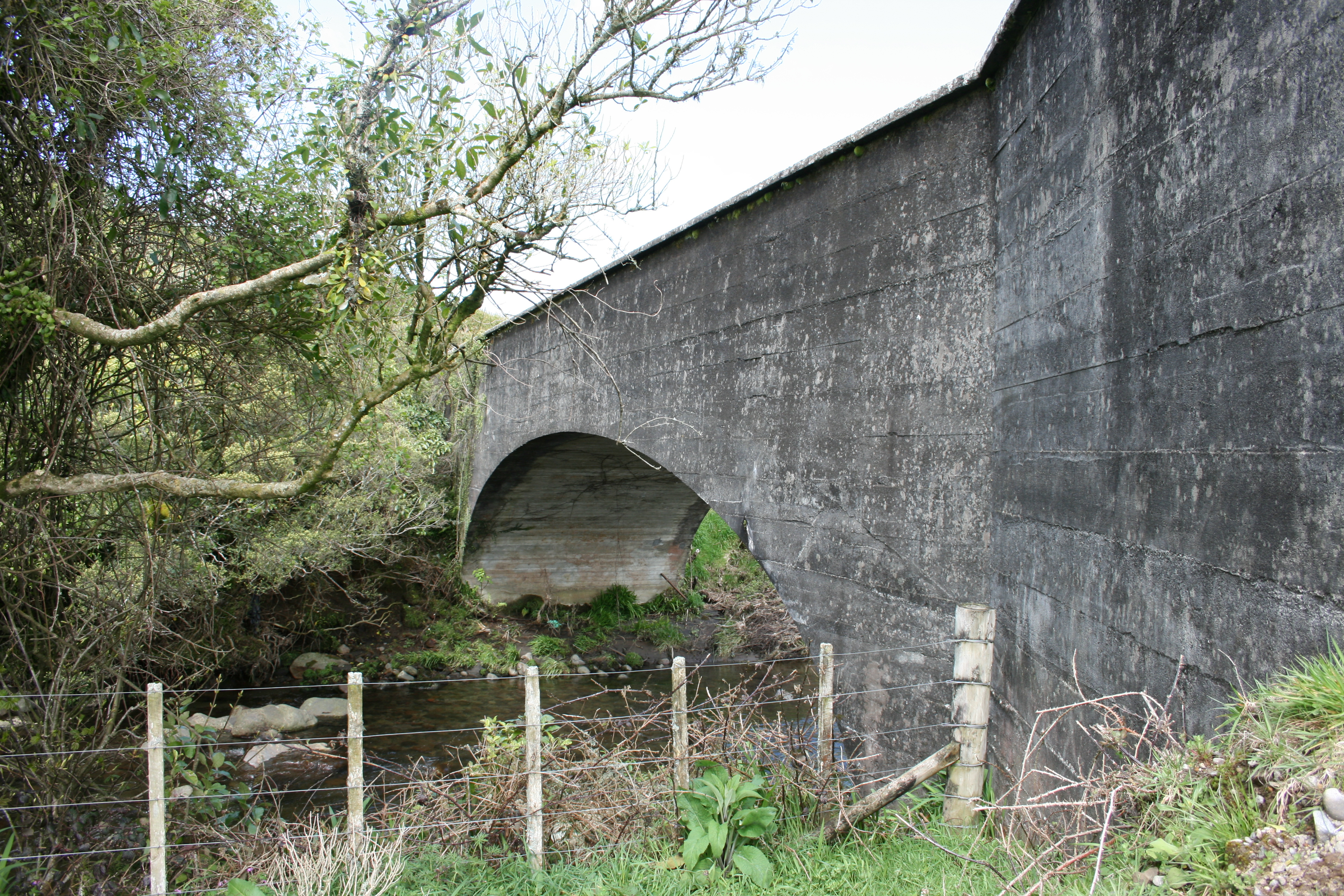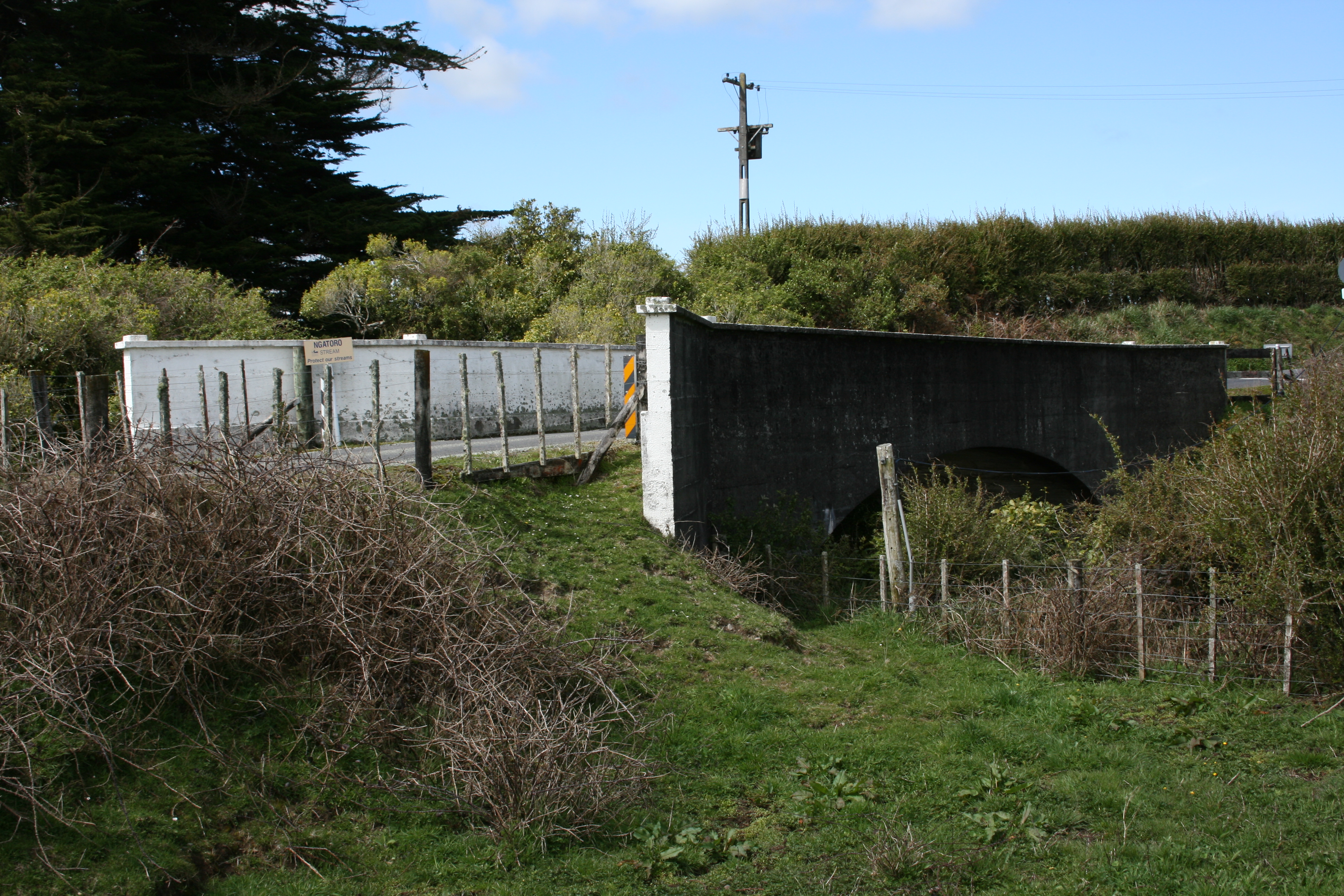





Taranaki's many streams from the mountain formed major problems for settlers and road-makers. The first bridges over the multitude of waterways were often wooden structures but by the 1920s they were decaying and in need major maintenance. Reinforced concrete was the favoured material for replacement bridges and new ones in the expanding countryside. Many of those concrete bridges remain on Taranaki's rural roads.
In August 1917 the Moa Road Board's overseer, Mr Hogg, met with local settlers on Bedford & Dudley Roads to discuss issues of a bridge over the Ngatoro Stream. He was concerned that the ford on the roadline was not workable for bridging but a site a little further downstream was more suitable. (TDN 20 Aug 1917)
In September Hogg and the County's engineer, E. C. Robinson met with locals again and Robinson also agreed that the most suitable site for a bridge was downstream. (TDN 17 Sept 1917)
Robinson reported to the Moa Road Board in November that "construction of the Ngatoro bridge, Bedford Road, was progressing favourably. Excellent foundations had been obtained for the piers, which were being erected. All the timber for false work had been delivered, also the reinforcing materials, and the cement was coming to hand as wanted." (TDN 19 Nov 1917)
In January 1918 Robinson reported that the "arch ring of the Ngatoro Bridge was nearly complete, leaving only the spandrell and the parapet walls and roadway to finish, the last of which would have to wait until the arch had properly set." (TDN 16 Jan 1918) In February he was able to advise the bridge was completed.
The change to the site further downriver explains the "dogleg" or deviation of the line of Bedford Road from the Dudley Road intersection. (See Survey Plan SO5763 & the report of the Board meeting)
Please do not reproduce these images without permission from Puke Ariki.
Contact us for more information or you can order images online here.